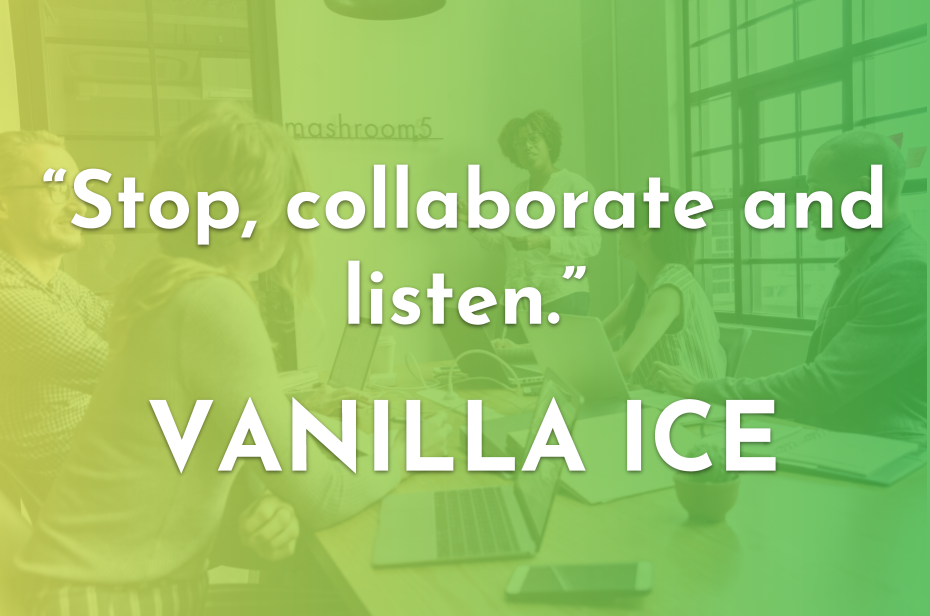This post is written by guest blogger, Nick Glimsdahl and is the companion to an interview on the Voice America show, Innovative Leaders Driving Thriving Organizations focusing on Conscious Capitalism with Mark Kovacevich focusing on Conscious Capitalism as a business accelerator.
The great entrepreneur, Vanilla Ice, once said, “Stop, collaborate, and listen”. In today’s business environment, that sage advice can elaborate to: stop and evaluate your current state, collaborate with experts, and listen to your customers.
Business leaders who champion customer-centric business models have stopped, collaborated and listened. And, in today’s digital age, being customer-centric requires a business model to effectively take advantage of current technologies to meet customer expectations.
Warren Buffett said, “It takes 20 years to build a reputation and five minutes to ruin it. If you think about that, you’ll do things differently.” Hence, a company’s business model should first and foremost orbit around the customer, specifically their customer experience (CX), addressing:
- The customer needs and wants
- The current state of the customer experience
- How the customer’s journey can improve
What is Customer Experience and why does it matter?
The customer experience is the new battleground for brand loyalty and a true differentiating factor for companies. It can be defined as the customer’s perception of an organization – often gained through contact center interactions – and how seamless or frustrating that interaction is. Shep Hyken, a customer service expert, author, and speaker said it this way, “A brand is defined by the customer’s experience. The experience is delivered by the employees.”
Beyond perception, CX is about delivering an expected outcome, and while the customer experience looks different for each company, common themes are:
- Response time
- Overall customer satisfaction
- Ability to obtain sought out information effortlessly
A customer experience-centric model considers more than just key customer-company touchpoints; instead, the model considers the entire Omni-channel journey from the customer’s perspective.
There are three ways to measure and improve your customer’s experience:
- Net Promoter Score (NPS)
- NPS® measures customer experience and predicts business growth. (i.e. 0-10 scale on how likely customers would recommend a business to a friend).
- Customer Satisfaction (CSAT)
- CSAT measures how products and services meet or surpass customer expectations. A CSAT score is the sum of respondents answering between “Satisfied” and “Very Satisfied”.
- Customer Effort Score (CES)
- CES, measures customer service satisfaction with one single questions. (i.e. The company made it easy to handle an issue).
Mature CX organizations monitor and understand the voice of the customer through these metrics.
Why should business leaders get behind the CX movement?
Forrester research found 71% of business and technology decision makers say that improving Customer Experience is a high priority in the next 12 months. But why? Henry Ford, Founder of Ford Motors, explained it well: “It is not the employer who pays the wages. Employers only handle the money. It is the customer who pays the wages.”
Brand loyalty is not what it was 20-30 years ago. A customer’s experience positively correlates to brand loyalty, and it is much more important because of the ease of switching service providers or ordering a product from Amazon. According to the Temkin Group, 86% of those who received excellent Customer Experience were likely to repurchase from that company, compared to only 13% of those who had a very poor Customer Experience.
The trend of the increasing purchasing ease will continue as will customer-first business models delivering effortless experiences. The remaining question is what businesses will stop and evaluate their current states, collaborate with experts, and listen to their customers?
To become a more innovative leader, please consider our online leader development program. For additional tools, we recommend taking leadership assessments, using the Innovative Leadership Fieldbook and Innovative Leaders Guide to Transforming Organizations, and adding coaching to our online innovative leadership program. We also offer several workshops to help you build these skills and system to create a regenerative, inclusive and thriving organization that will have a positive impact in the world.
About the Author
Nick Glimsdahl is the Client Enablement Director for VDS. VDS creates effortless interactions. It helps improve the way enterprising businesses deliver customer experiences. With a 30-year history of delivering results, its success in creating effortless interactions is unmatched. As a client enablement lead, Nick brings his clients the right communications solution: contact centers through (Genesys / Five9), business collaboration (Microsoft Skype) for Business, or enterprise telephony solutions so you can deliver the best customer experience.





